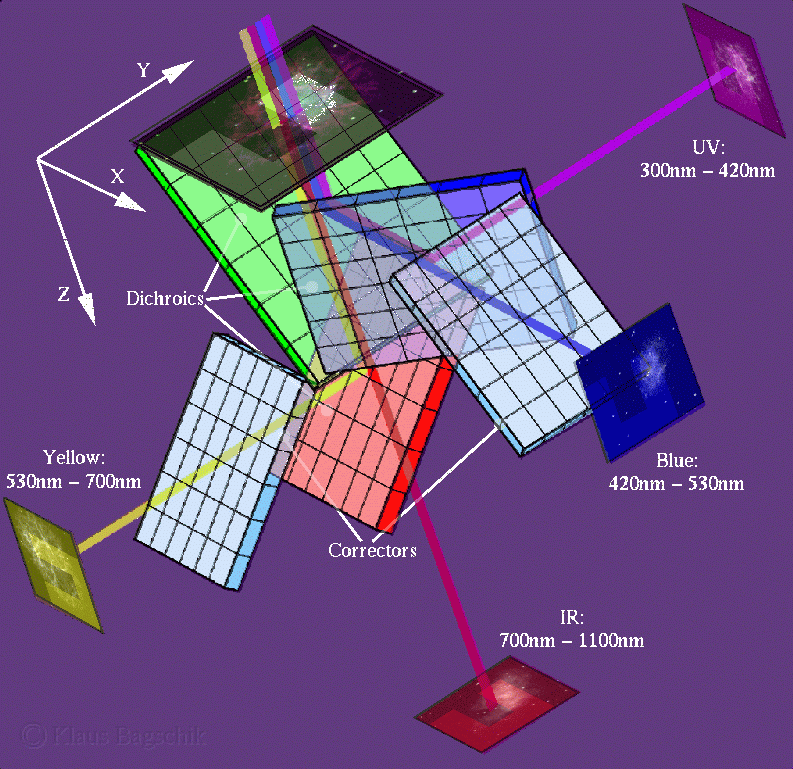The Optics of BUSCA
The Simultaneous Four-Color-Camera
Schematic 3D Optical Layout
The diagram below shows a "pseudo-3D" downward view of the optics of BUSCA from the southwestern quadrant. The three arrows in the upper left corner give an impression of scale, each being 100mm long.

The four colored squares, purple, blue, yellow and red represent the CCD-detectors (sorted by increasing wavelength). The CCDs for "UV" (purple) and "IR" (red) show the observer their illuminated faces, whereas the "blue" (blue) and "yellow" (yellow) CCDs are seen from their rear (dark) sides.
The letter "F" on each square (and in the shutter-plane of BUSCA, top left) shows the orientation of the images in the four wavelength-bands. As can be seen, both "UV" and "IR" give the correct orientation --- either due to no ("IR") or double ("UV") reflections --- whereas the other two (one reflection each) have mirrored orientation (the "F" is nevertheless seen in the correct orientation because the view shows the corresponding CCDs from their rear sides).
The color given to the dichroics in the image above hints at their transition wavelength, i.e. the changeover from predominately reflecting to mostly transmitting the incoming light. The primary dichroic (green) splits the light into two regions, reflecting shortward of 530nm and transmitting longward thereof. The blue secondary dichroic receives the light reflected by the primary and has a transition wavelength of 420nm, wheras the one hit by the transmitted light (red) starts transmitting longwards of 700nm. Astigmatism correctors are depicted in pale blue.
In the light paths that traverse only one dichroic beamsplitter ("blue" & "yellow") the astigmatism caused by this is cancelled (to the greatest part) by the introduction of a plano-parallel glass plate of suitable orientation (the 2nd beamsplitter in the path to the "IR" CCD serves double duty as a corrector plate) into the optical train. The plates are of the same glass as the beamsplitters and thus (have to) have the same thickness.
The design (size of filters etc.) was made with large CCDs in mind (4k x 4k, 15mu square pixels; or 2k x 2k, 30mu square pixels), but for the testing phase we stuck to our "small" LORAL FA2048 (2k x 2k, 15mu square pixels). The CCD485s (4k x 4k, 15mu square pixels) now in use give BUSCA a field of view of 12' x 12' at the 2.2meter f/8 telescope at Calar Alto Observatory for which it was built as a common user instrument.